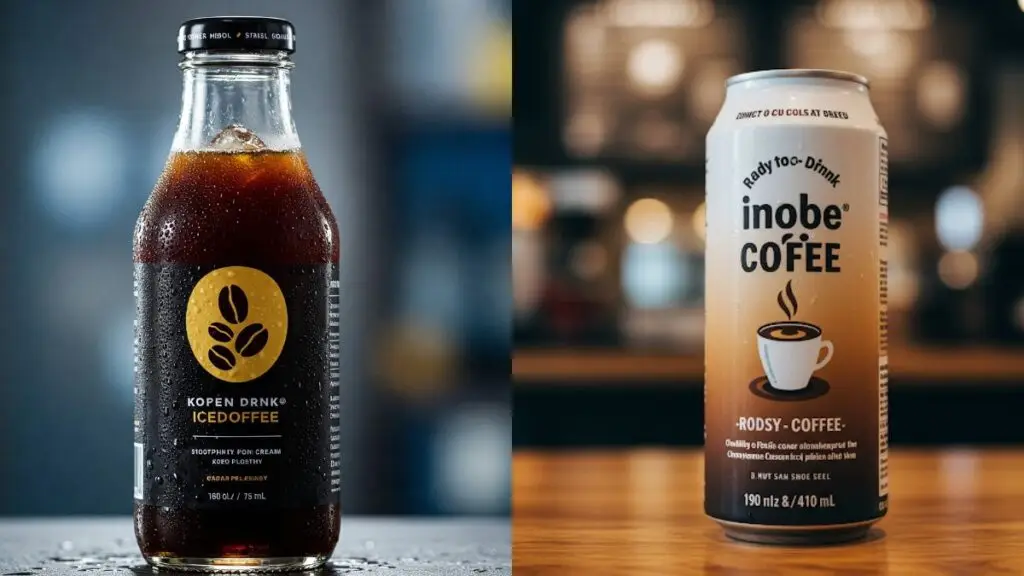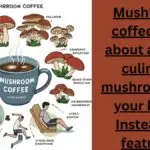Ready-to-drink coffee (RTD) is quickly becoming one of the most popular trends in the global coffee industry. Unlike traditional coffee that requires brewing, RTD coffee is pre-made and packaged for immediate consumption. Whether it comes in a can, bottle, or carton, it offers convenience, variety, and consistent quality — all with zero prep time.
From busy professionals to students and travelers, more people are turning to RTD coffee to fuel their day. This article explores everything you need to know about this booming category: the different types, practical uses, health and lifestyle benefits, and more.
Types of Ready-to-Drink Coffee
RTD coffee isn’t a one-size-fits-all product. It comes in several forms, each designed to meet different tastes, needs, and situations. Let’s break them down by packaging and brewing method.
RTD Coffee by Packaging
| Packaging Type | Description | Advantages |
| Cans | Most common format, usually 180-250ml. | Easy to carry, protects from light and oxygen. |
| Bottles | Glass or PET plastic bottles. | Premium look (glass), lightweight and recyclable (PET). |
| Cartons | Popular for dairy-based drinks. | Easy to store, family or single-serve sizes. |
| Cups | Mimics takeaway coffee cups. | Comes with a lid and straw, great for on-the-go use. |
RTD Coffee by Brewing Method
Espresso-based: Includes lattes, cappuccinos, and macchiatos. Often made with Arabica beans and milk for a creamy, smooth texture.
Cold brew: Brewed with cold water over 12-24 hours. Smooth, less acidic, often without milk.
Nitro cold brew: Infused with nitrogen for a creamy texture and frothy head.
Plant-based milk coffee: Uses almond, soy, or oat milk. A hit with vegans and lactose-intolerant drinkers.
Vietnamese iced coffee: Strong, sweetened with condensed milk. Robust and rich.
Benefits of Ready-to-Drink Coffee
Convenience for All
No brewing or equipment needed — just open and enjoy.
Perfect for commuting, traveling, or office work.
Clean, no mess or spills.
Beginner-Friendly
No barista skills required.
Milder options for new coffee drinkers.
Lower caffeine versions are available.
Appeals to Diverse Lifestyles
Great for professionals, students, fitness lovers.
Protein-infused and functional options available.
Fits health-conscious lifestyles (low sugar, dairy-free).
Trendy and Versatile
Easily access trendy drinks like nitro or cold brew.
Variety of flavors, from classic to exotic.
How is RTD Coffee Made?
Brewing
Manufacturers brew coffee in large tanks using consistent water-to-coffee ratios and quality beans. This ensures a stable taste profile in every batch.
Mixing Ingredients
Brewed coffee is blended with sugar, milk or non-dairy alternatives, flavors, and sometimes preservatives. Each recipe is carefully measured for taste and texture.
Filling & Sterilization
Automated machines fill the drinks into cans, bottles, or cartons. Then, they are sealed and sterilized using pasteurization or UHT processing.
Packaging
Labeling and branding come last. Attractive, informative packaging helps products stand out on shelves while protecting the drink.
Common Uses of RTD Coffee
Morning fuel: Quick coffee fix for busy mornings.
Pre-workout boost: Caffeinated energy before hitting the gym.
Study sessions: Keeps students focused and alert.
Travel companion: Easy to pack and sip on-the-go.
Office breaks: Refreshing alternative to brewed coffee.
Who Drinks RTD Coffee?
RTD coffee appeals to a wide demographic:
Young professionals who are always on the move.
Fitness enthusiasts needing caffeine with protein or energy.
Students looking for easy focus-enhancing options.
Health-conscious individuals wanting low-sugar or plant-based drinks.
Coffee aficionados who enjoy the quality and consistency.
RTD Coffee vs. Instant and Takeaway Coffee
| Type | Prep Required | Packaging | Portability | Taste Quality |
| RTD Coffee | None | Cans, bottles, cartons | High | Consistent |
| Instant Coffee | Add hot water | Sachets, jars | Medium | Variable |
| Takeaway Coffee | Brewed fresh | Disposable cups | Medium | High but short shelf life |
Market Growth and Trends
The RTD coffee market is expanding fast, driven by demand for convenience and health-conscious options. Innovations like plant-based flavors, functional ingredients (like collagen or protein), and sustainable packaging are reshaping the industry.
Key Trends:
Growing demand for clean-label, low-calorie, and dairy-free options
Rise of functional coffees with added health benefits
Eco-friendly packaging solutions
Why Should You Try Ready-to-Drink Coffee?
No prep, no mess — perfect for your daily routine.
Tailored flavors — choose what suits your mood.
Fits all occasions — morning, mid-day, pre-workout.
Great shelf life — stock it at home, in your car, or at the office.
Final Thoughts
Ready-to-drink coffee (RTD) is more than a trend — it’s a lifestyle shift. It offers a fast, flavorful, and versatile way to enjoy coffee without sacrificing quality. Whether you prefer a creamy latte, bold cold brew, or something dairy-free, there’s an RTD coffee out there for you.
As the category continues to grow, expect even more exciting innovations. If you haven’t tried RTD coffee yet, now is the perfect time to sip into the future of convenience.
FAQ
What does RTD coffee stand for?
It stands for “Ready-to-Drink” coffee — pre-packaged coffee drinks you can consume without brewing.
Is RTD coffee healthy?
Yes, many options are low in sugar, dairy-free, or infused with added benefits like protein or vitamins.
How long does RTD coffee last?
Most RTD coffees are shelf-stable and last several months unopened. Always check the expiration date.
Can I store RTD coffee in the fridge?
Yes, though it’s often shelf-stable, chilling it makes it more refreshing — especially cold brews and iced styles.
Is RTD coffee the same as instant coffee?
No. Instant coffee requires hot water to make. RTD coffee is pre-made and ready to drink straight from the package.



